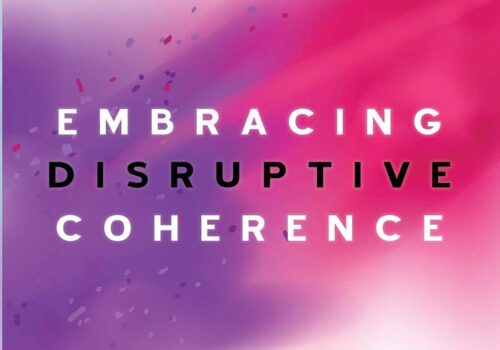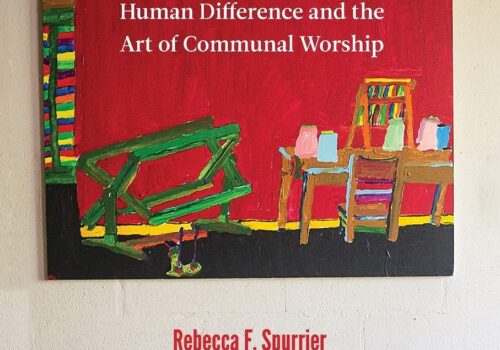Download PDF: RV Ellis The Ecology of Spirituality
By Lucy Bregman
Waco: Baylor University Press, 2014. 198 pages. $29.95.
There are many ways to illustrate the ubiquity of “spirituality” in contemporary American culture. Perhaps the most common way is to cite the numerous polls that point to the growing number of Americans who identify as “spiritual but not religious.” To this demographic phenomenon, Lucy Bregman adds another example at the opening of her book that is intended to illustrate the many meanings attached to the often simple-sounding notion of “spirituality:” in 1991 the Canadian Association of Occupational Therapists (CAOT) “issued an official statement that claimed ‘spirituality’ lay at the core of their profession” (4). While the reader might initially be confused as to why a religion scholar is talking about occupational therapists, the perceived randomness proves her point regarding the ubiquity of “spirituality.” What explanation could possibly account for such a thoroughly secular application of a term that unquestionably has its (Western) roots in monastic practices?
Bregman structures The Ecology of Spirituality as the outworking of three cleverly complimentary approaches to answering this question. In the first approach (chapters 1-3), she compares the abundance of definitions that have paralleled spirituality’s progression outside of strictly “religious” settings. Next (chapters 4-6), she analyzes spirituality’s organic and historical relationship to three intellectual disciplines (psychology, religious studies, and sociology of religion). Lastly (chapters 7-9), she investigates the nuances of how different rhetorics of “spirituality” have recently been employed in surprising “niches” (health care, the workplace, and recreation).
Undoubtedly, one of the strengths of Bregman’s varied approach is that it deconstructs any notion that “spirituality” denotes something recognizably the same across the range of its uses. For instance, in arenas influenced by psychology and health care, talk of spirituality functions as a reaction against the pharmacolization of psychology (61-72) and the materialistic reductionism of medicine (104-118) in the name of the holistic treatment of suffering persons. In contrast, in the arena of recreation “spirituality” tends to be associated with a “connectedness” to Nature and the escape from the “iron cage” of Work (124-144). On the basis of such contrasts, Bregman ends up concluding that spirituality “is a bundle of images, ideas, yearnings, and possibilities, drawn from a variety of sources and conflated by hopeful practitioners, professionals, and scholars to do triple or quadruple duty in multiple contexts” (166).
Even in view of such a judgment, the most compelling aspect of The Ecology of Spirituality consists in Bregman’s introduction of two interpretative lenses that can be applied to spiritualities across the spectrum. The first lens names the difference between what she calls “two-poled” and “one-poled” spiritualities. The second lens asks to what degree any given concept of spirituality advocates the centrality of embodied practices, meaning any “activity done intentionally and with effort over time” (37).
A two-poled formulation of spirituality includes an outward, “objective” pole that acts as an “external object of apprehension and aspiration” and an inward, “subjective” pole that functions as the seat of volition and desire within the individual (15). Within such a two-poled understanding, spirituality is practiced by individuals in the lived and embodied tension between a desired ideal and the daily reality of gradually moving towards that ideal. Two-poled spiritualities tend to include attention to practices, because the path from mere aspiration to realization of an ideal is typically bridged by the incorporation of practices: to realize an ideal is to master a given practice. Accordingly, two-poled spiritualities are usually amenable to processes that include the incorporation of beginners, instructions for learning, willed surrender to role models (i.e. authorities), and the inculcation of virtues necessary for success (e.g. humility, courage, justice, perseverance, and honesty).
Part of the significance of her description of two-poled spirituality is that it helps to unhinge the habit of placing “spirituality” and “religion” in a competitive relation. This is because spiritualities that are classically “religious” (e.g. Teresa of Avila’s The Interior Castle) and those that are self-consciously secular (e.g. Peter Van Ness’s Spirituality and the Secular Quest) can both qualify as two-poled. The former advocates the gradual refinement of an individual’s motivations into those that characterize union with God via practices such as prayer, meditation, and the reception of the sacraments (32-36). The latter advocates the complementarity of individuals’ “most enduring and vital selves” as inwardly shaped by “self-transformation and subsequent gradual development” with the outward engagement of reality as a “maximally inclusive whole” (15). Bregman suggests that even thoroughly recreational practices, such as golf or kayaking, might qualify as “spiritual” in this sense if they are “pursued with the same craft, care, devotion, and intrinsic values that any traditional practice teaches and with the same intrinsic virtues of courage, honesty, and fairness” (138). One could add to this any intentional attempt to grow in the type of interpersonal relational skills (128-131) that she describes as inherent to “workplace” spirituality in chapter 8.
In contrast, many recent definitions are “one-poled” because they drop any reference to an outward pole, thus reducing spirituality to its subjective pole, usually as connected to an “inner inescapable human essence” that enables each person to “self-determine his or her life” (17). From this perspective, spirituality is something primordial “in” each individual. Spirituality is thus not a “field for achievement [or learning]” (31) because spirituality always and already “is.” To her scholarly credit, Bregman slowly builds the momentum of her critique of such spiritualities of “expressive individualism” so that it does not distract from the plausibility of her historical genealogies. Nonetheless, by the time she arrives at her conclusion she has set the stage for a noticeable change in tone towards outright critique.
The targets of her critique of “one-poled” spirituality are those that see in it a kind of trans-cultural, de-centralized, anti-institutional, utopian source of “Change” that marks, in David Griffin’s words, a transcendence of all “individualism, anthropocentrism, patriarchy, mechanization, economism, consumerism, nationalism, and militarism” (156). Such a view of spirituality would see the “spiritual but not religious” crowd, as well as the Canadian occupational therapists, as “the first wave of the spirituality revolution” (155).
This individualized spirituality is usually driven by the desire to integrate and offer the “best of all” religions or cultures in this “new age,” in which it is supposed that the “sum total of human knowledge is available to us” (159). Bregman wonders whether, precisely by being suspicious of all authority (162-163), we might actually end up being unconsciously defined by another authority: the endlessly commodified market. Shorn of any attention to the wisdom of recognized authorities and concrete institutional, communal, or geographical contexts, the resulting vacuum is filled by the vicious whims of the market: “vanity, narrow vision, and greed” (163). Thus, the wisdoms of “religious traditions are reduced to jewelry and knick-knacks,” and decontextualized practices are distilled into Yoga routines and books entitled, Zen in the Art of _______, even while “the economic system thrives” under the “virtuous” guise of “self-determination” (162). In place of the gradual refinement inherent to two-poled spiritualities, what is left is only the illusion that spirituality can yield the immediate realization of a financial transaction. It is only on the other side of this critique that the relevance of one of Bregman’s early evaluative remarks comes into focus: “To begin from [an] older [and two-poled] definition and context is useful not because we are nostalgic for the good old days of traditional monastic piety but because the older ideals and lifestyle had internal coherence and answered questions that more recent advocates of spirituality have difficulty answering well” (32).
Despite the fact that Bregman does not pursue such connections, it is noteworthy (and adds confirmation to her thesis) that her description of “two-poled” spirituality—wound around the productive tension between the finitude of individuals and the universality of God or the cosmos—aligns with many philosophical and theological riffs on the ancient theme of the relationship between the “one and the many.” For instance, it echoes Nicholas of Cusa’s influential postulation of intensive (the One) and universal (Many) infinities as characterizing creation’s imaging of God’s own eternal infinity. Likewise, it also overlaps with Thomas Aquinas’s description of human existence as an embodied, finite act that is grounded in and hastens towards the infinite act of God. Similarly, her eloquent focus on the centrality of practices holds a promising affinity to Aristotelian phronesis and its contemporary repristinations in the work of Pierre Bourdieu and others.
In noting these thematic connections, it is somewhat ironic to observe that Bregman’s work is least convincing when she is attempting to reach back into intellectual history in order to support the subpoints of her thesis. For instance, her collocation of Friedrich Schleiermacher, William James, and Rudolph Otto as all promoting an “extremely individualistic” (85) conception of “religion” that sets the stage for “spirituality” to reinstate a focus on embodied “connection” within religious studies is unconvincing and hasty. This is especially the case for anyone acquainted with Schleiermacher’s focus on the communal nature of the church.
In this sense, Bregman is at her best as an exacting, and rightfully devastating, critic of the many flippant and incoherent contemporary uses of the rhetoric of spirituality. Nonetheless, the above connections suggest that even in the role of a critic Bregman evidences keen intellectual intuition and constructive insight in staking out a path upon which others could productively follow and expand.




